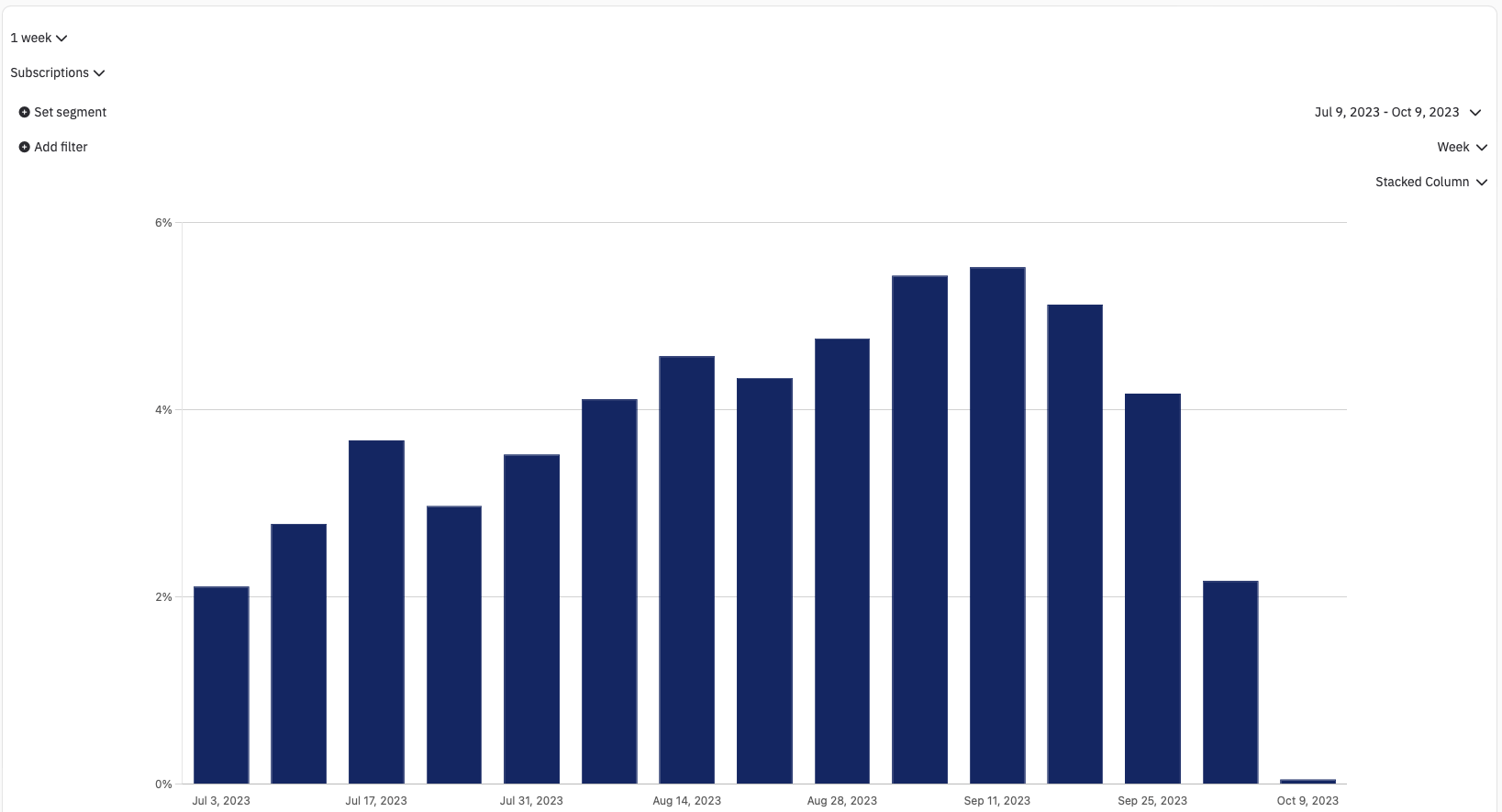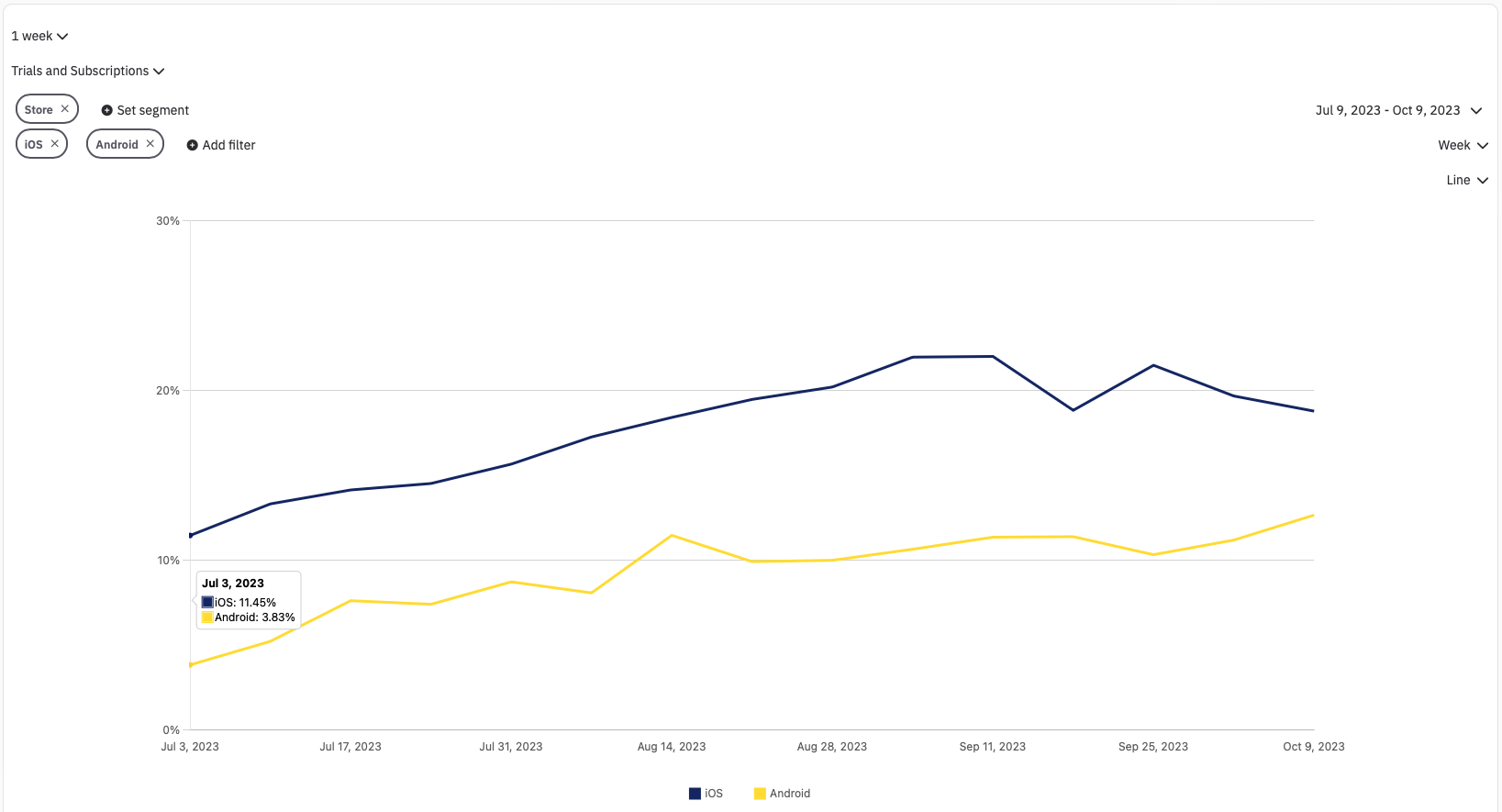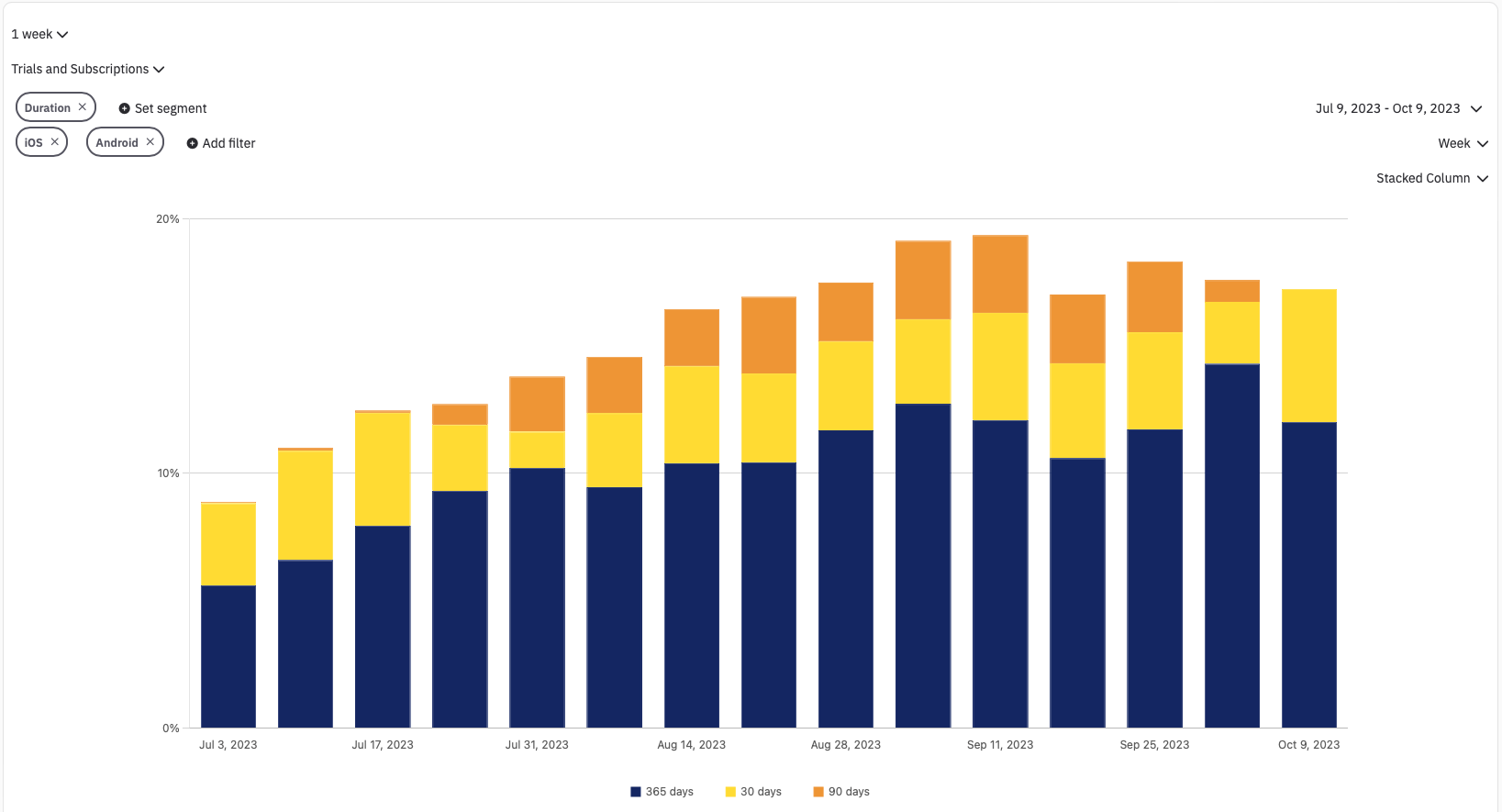Install Conversion Rate
The Install Conversion Rate is a vital metric that reflects the effectiveness of turning app installations into active users. It measures the percentage of users who not only download your app but also take a specific action like making a purchase or starting a trial. This metric is crucial for understanding the success of your user acquisition strategies and the ability of your app to engage users from the moment they install it.
It can be calculated at different time horizons, i.e. time from install within the users has converted, namely 1 day, 2 days, 1 week, 2 weeks, 1 month and 3 months.
Conversion Rate to Trial or Subscription
To calculate the Install Conversion Rate, you divide the number of users who started a subscription or initiated a trial by the total number of app installations. We use the number of users we see for the first time as a proxy of the number of app installation. This calculation results in a percentage, representing the rate at which installations translate into an action.
The formula in this case is:
Conversion Rate at N Days = (# users who start a subscription or a trial within N days from being seen the first time) / (# users we see the first time)
This calculation enables businesses to track customer acquisition over time and evaluate how they compare with their marketing efforts and spending.

Conversion Rate to Subscription
A more precise calculation could involve only those users who initiate a subscription. This subset of users is the one responsible for the transformation into active, revenue-generating subscribers. This iteration of the metric places a stronger emphasis on the economic value generated and is more suitable for evaluating the return on marketing investments from an economic perspective.
When focusing on paying users, the formula becomes:
Conversion Rate at N Days = (# users who start a subscription within N days from being seen for the first time) / (# users we see for the first time)
As expected, the Conversion Rate to Subscription can be significantly lower, because it also implicitly encapsulates information about the Trial Conversion Rate.

Applications
The Install Conversion Rate holds immense significance:
- User Acquisition Effectiveness: A higher conversion rate indicates that a substantial portion of your app's downloaders is becoming active users. This reflects the effectiveness of your user acquisition and onboarding strategies.
- App Engagement: It is a measure of how well your app engages users from the very beginning. A strong Install Conversion Rate suggests that your app's value proposition is compelling, leading to quick and meaningful interactions.
- Marketing Impact: Analyzing changes in the Install Conversion Rate can help you assess the impact of different marketing campaigns or onboarding enhancements on user engagement.
Notes
For this metric you have the usual options for Filtering and Segmenting. Bear in mind that these options are not all equal.
-
Store, Country and Currency Code: this information is known as soon as there is a new user. Thus it's possible to segment the users we see for the first time by this information, and calculate a Conversion Rate separately for each of them.
For instance, we can calculate the Install Conversion Rate of users from the Apple Store as:
Conversion Rate for Apple Store at N Days = (# of Apple Store users who start a subscription within N days from being seen the first time) / (# of Apple Store users we for see the first time)
For this reason, they can be calculated independently, can be compared but cannot be summed. They refer to different initial populations.
-
Duration and SKU: this information is only known after a users purchases a subscription or initiates a trial. Thus we can express the Conversion Rate as a fraction of the total number of installs.
For instance, we can calculate the Install Conversion Rate of users with a weekly subscription as:
Conversion Rate of weekly subscriptions at N Days = (# users who start a weekly subscription within N days from being seen the first time) / (# users we see for the first time)
This means that the conversion rate of each segment is calculated as a fraction of the same quantity -# users we see for the first time- and they can therefore be summed. Their sum represent the total Install Conversion Rate

Updated about 1 year ago
